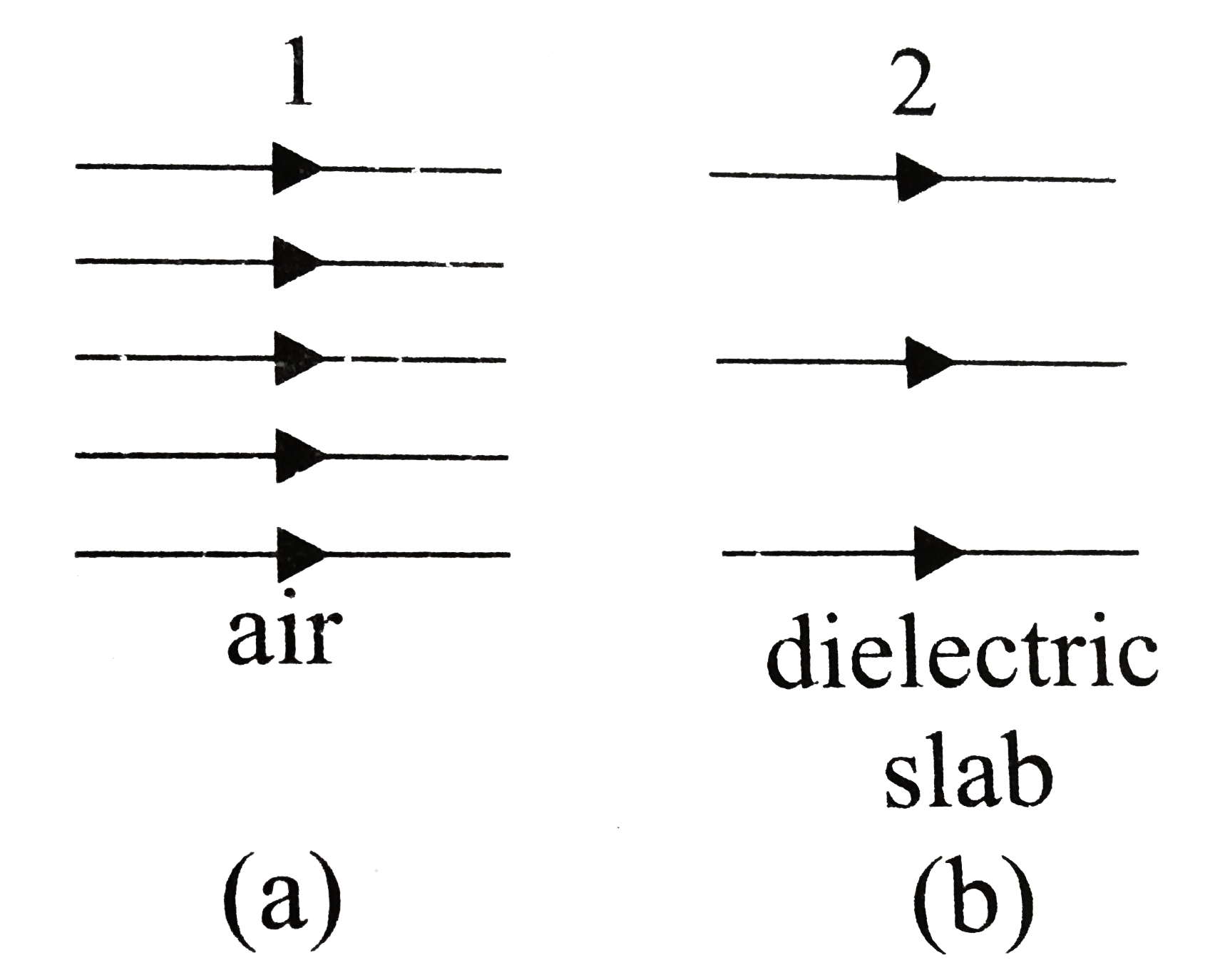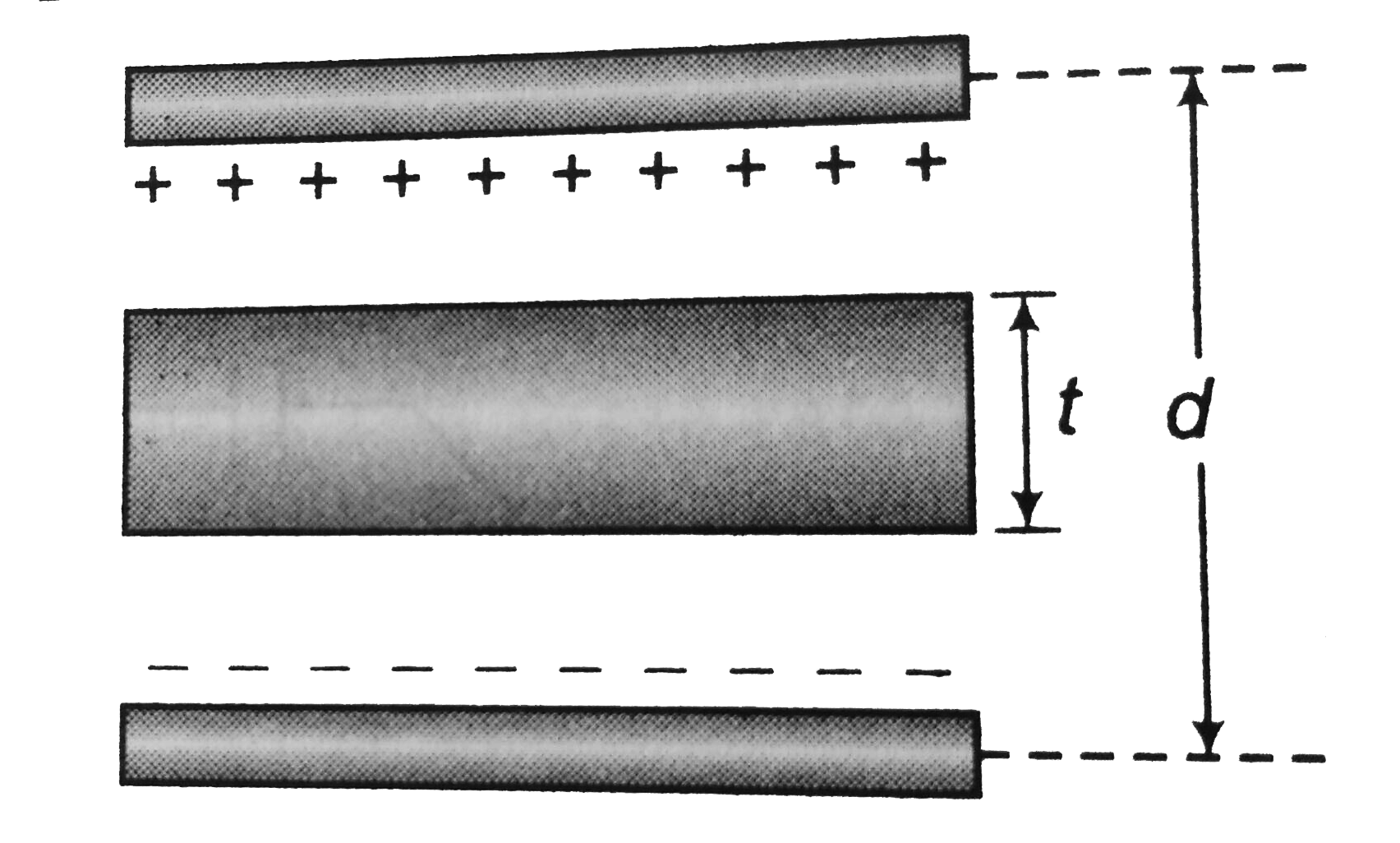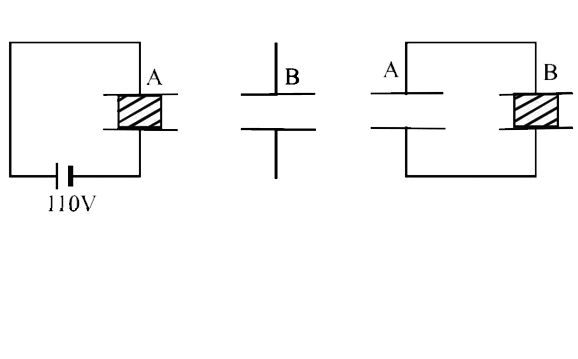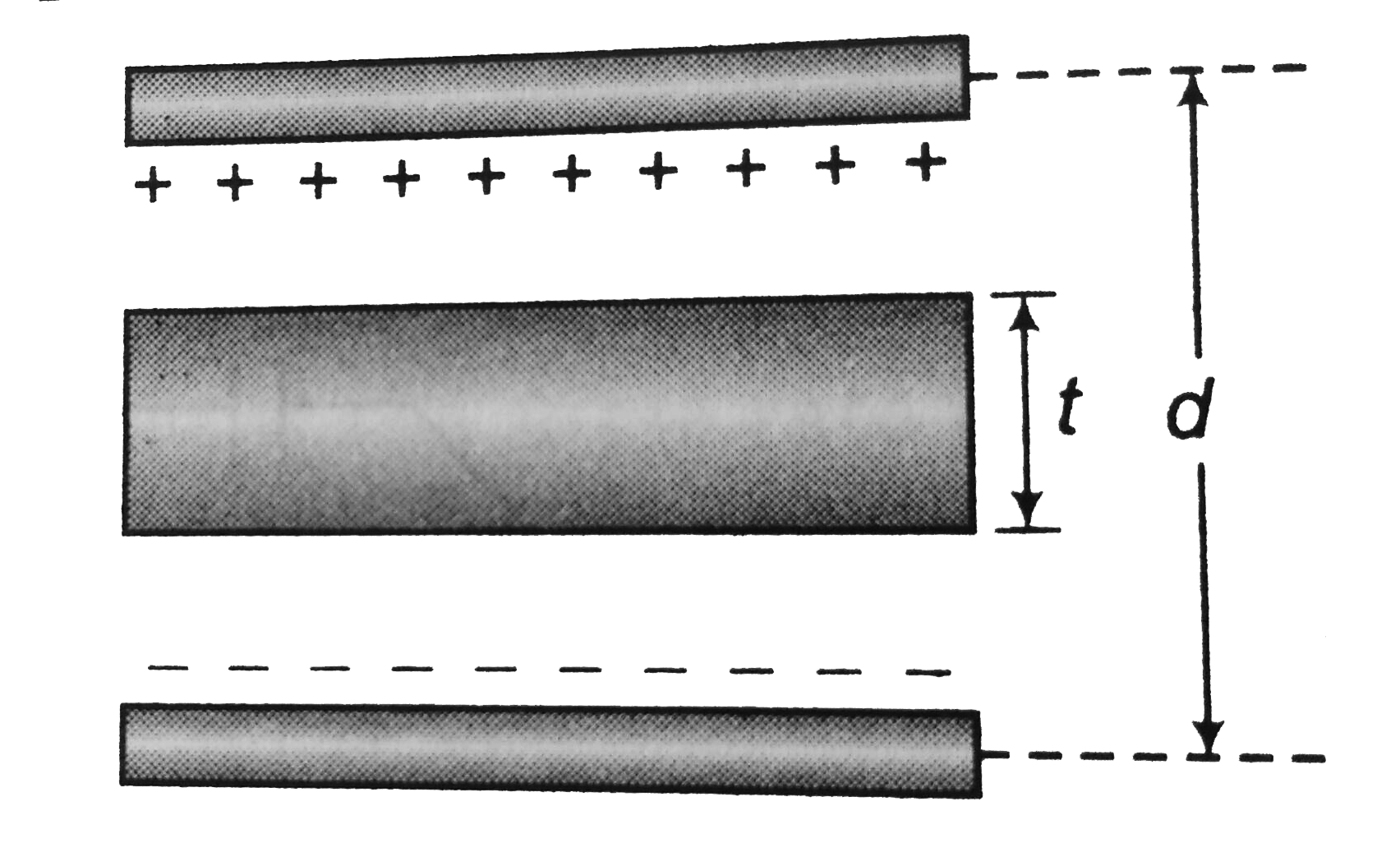Assertion : When a dielectric is placed in an electric field, the electric field with in the dielectric as well as. Potential difference across the capacitor plates are reduced by a factor K (battery is not connected).
Reason : The dielectric constant is the ratio of the absolute permittivity of the dielectric to the to the permittivity of the free space.
If both Assertion and Reason are true and Reason is the correct explanation of Assertion.
If both Assertion and Reason are true but Reason is not correct explanation of Assertion.
If Assertion is true but Reason is false.
If Assertion is false but Reason is true.
The correct Answer is:B
To solve the question, we need to analyze both the assertion and the reason provided.
Step 1: Understanding the Assertion
The assertion states that when a dielectric is placed in an electric field, the electric field within the dielectric and the potential difference across the capacitor plates are reduced by a factor K when the battery is not connected.
- When a dielectric material is inserted into a capacitor, it polarizes, which reduces the effective electric field (E) within the dielectric.
- The potential difference (V) across the capacitor plates is related to the electric field and the distance (d) between the plates by the formula:
V=E⋅d
- Since the electric field is reduced by a factor of K, the potential difference will also be reduced by the same factor K.
Step 2: Understanding the Reason
The reason states that the dielectric constant (K) is the ratio of the absolute permittivity of the dielectric (ε) to the permittivity of free space (ε0):
K=εε0
- This statement is correct as it defines the dielectric constant accurately.
Step 3: Analyzing the Relationship
While both the assertion and the reason are correct, the reason does not provide a correct explanation for the assertion. The assertion discusses the effects of introducing a dielectric on the electric field and potential difference, while the reason merely defines the dielectric constant without linking it to the reduction of the electric field and potential difference.
Conclusion
- Both the assertion and the reason are true statements.
- However, the reason does not correctly explain the assertion.
Thus, the final answer is that both the assertion and reason are correct, but the reason is not a correct explanation for the assertion.
Final Answer
Assertion is true, Reason is true, but Reason is not the correct explanation for Assertion.
The assertion states that when a dielectric is placed in an electric field, the electric field within the dielectric and the potential difference across the capacitor plates are reduced by a factor K when the battery is not connected.
- The potential difference (V) across the capacitor plates is related to the electric field and the distance (d) between the plates by the formula:
V=E⋅d
- Since the electric field is reduced by a factor of K, the potential difference will also be reduced by the same factor K.
The reason states that the dielectric constant (K) is the ratio of the absolute permittivity of the dielectric (ε) to the permittivity of free space (ε0):
K=εε0
- This statement is correct as it defines the dielectric constant accurately.
While both the assertion and the reason are correct, the reason does not provide a correct explanation for the assertion. The assertion discusses the effects of introducing a dielectric on the electric field and potential difference, while the reason merely defines the dielectric constant without linking it to the reduction of the electric field and potential difference.
- Both the assertion and the reason are true statements.
- However, the reason does not correctly explain the assertion.
Assertion is true, Reason is true, but Reason is not the correct explanation for Assertion.
Topper's Solved these Questions
- ELECTROSTATIC POTENTIAL AND CAPACITORSBOOK - DC PANDEY ENGLISHCHAPTER - ELECTROSTATIC POTENTIAL AND CAPACITORSEXERCISE - (C) Chapter exercises
50 Videos
- ELECTROSTATIC POTENTIAL AND CAPACITORSBOOK - DC PANDEY ENGLISHCHAPTER - ELECTROSTATIC POTENTIAL AND CAPACITORSEXERCISE - (A) Chapter exercises
227 Videos
- ELECTROMAGNETIC WAVESBOOK - DC PANDEY ENGLISHCHAPTER - ELECTROMAGNETIC WAVESEXERCISE - Sec C
22 Videos
- ELECTROSTATICSBOOK - DC PANDEY ENGLISHCHAPTER - ELECTROSTATICSEXERCISE - Medical entrances gallery
37 Videos
Similar Questions
The displacement current flows in the dielectric of a capacitor when the potential difference across its plates-
View SolutionThe displacement current flows in the dielectric of a capacitor when the potential difference across its plates-
View SolutionIn figure , there are two patterns of electric field lines absent of dielectric and in presence of dielectric slab. The relative permittivity of the dielectric slab is
 ,
,
View SolutionAir filled capacitor is charged by a battery and after charging battery is removed. A slab of dielectric material is inserted in it to fill the space completely . The electric field in the capacitor is
View SolutionA parallel plate capacitor is connected across a battery. Now, keeping the battery connected, a dielectric slab is inserted between the plates. In the process,
View SolutionFigue shows a parallel plate capacitor with plate area A and plate separation d. A potential difference is being applied between the plates. The battery is then disconnected and a dielectric slab of dieletric constant K is placed in between the plates of the capacitor as shown.

The electric field in the dielectric slab is
View SolutionTwo parallel plate capacitors A and B have the same separation d=8.85×10−4m between the plates. The plate area of A and B are 0.04m2 and 0.02m2 respectively. A slab of dielectric constant (relative permittivity) K=9 has dimensions such that it can exactly fill the space between the plates of capacitor B.

(i) The dielectric slab is placed inside. A as shown in figure (a). A is then charged to a potential difference of 110V. Calculate the capacitance of A and the energy stored in it.
The battery is disconnected and then the dielectric slab is moved from A. Find the work done by the external agency in removing the slab from A.
(iii) The same dielectric slab is now placed inside B, filling it completely, The two capacitors A and B are then connected as shown in figure(c). Calculate the energy stored in the system.
View SolutionElectric field inside the capcitor is 100 V/m and dielectric constant =5.5. What is the polarization ?
View SolutionFigure shows a parallel plate capacitor with plate area A and plate separation d. A potential difference is being applied between the plates. The battery is then disconnected and a dielectric slab of dieletric constant K is placed in between the plates of the capacitor as shown.

The electric field in the gaps between the plates and the electric slab will be
View SolutionA capacitor has some dielectric between its plates, and the capacitor is connected to a DC source. The battery is now disconnected and then the dielectric is removed. State whether the capacitance, the energy stored in it, electric field, charge stored and the voltage will increase ro remain constant.
View Solution
